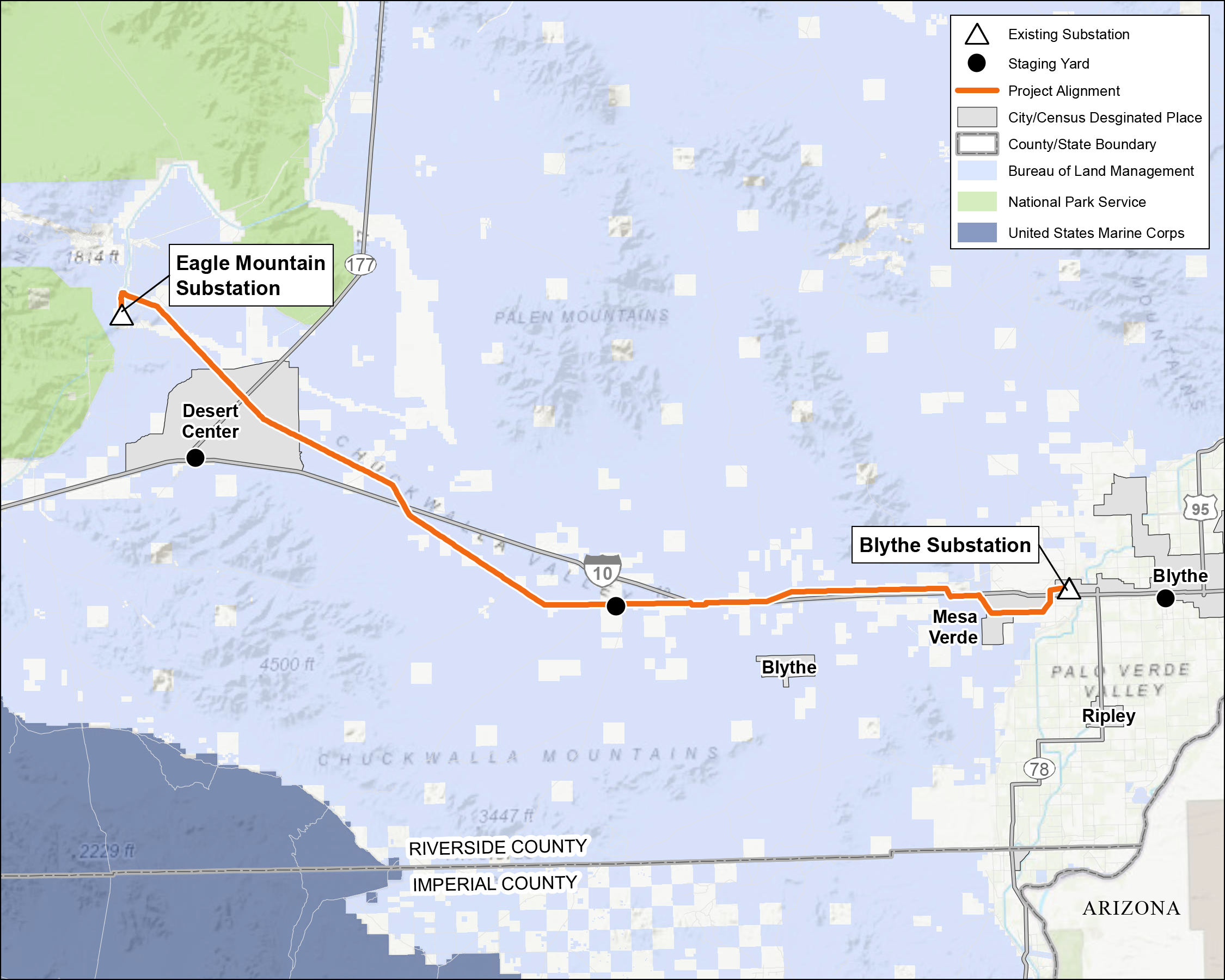
About the Project
The Eagle Mountain-Blythe (EMB) Project will enhance the safety of Southern California Edison’s (SCE’s) transmission system, controlled by the California Independent System Operator (CAISO). The project is now in the initial planning phase. SCE anticipates filing a project application with the California Public Utilities Commission (CPUC) in 2024 in coordination with the Bureau of Land Management (BLM). If approved by the CPUC, the project is anticipated to begin construction by the end of 2025. The purpose of the Project is to resolve approximately 168 phase-to-ground clearance discrepancies along the EM-B 161-kV circuit by replacing the existing conductors and replacing select structures to meet the line rating clearance requirement for the circuit.
The EMB project is proposed to follow CPUC (GO 95) safety standards and include remediation activities such as replacing conductor (wire) and replacing structures to increase conductor ground clearances. Most of the construction will take place in existing rights-of-way to minimize environmental impacts. The estimated project completion date is late 2026.
The proposed project is located in Riverside County in California and the City of Blythe. The project will span from SCE’s Eagle Mountain Substation to the Blythe Substation. Currently the EM-B line is comprised of 375 structures. The Project will remove 53 structures and replace them with 44 structures, resulting in a total of 366 structures on the EMB line after completion of the Project (a net reduction of 9 structures).
Prior to construction, crews will be in the area performing survey work and testing. Once construction begins, crews may be performing the following work in your area:
- Replacing conductors (wires) and replacing structures in identified areas as needed.
- Establishing temporary construction staging areas for crews and construction equipment, including crane and helicopter pads
- Trimming or removing vegetation, when necessary, in and around construction work areas
- Maintaining access roads in and around construction
- Scheduling temporary street closures, as needed, for safety
For more information, email us at EMBInfo@sce.com.
